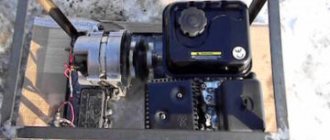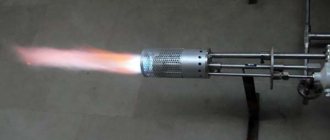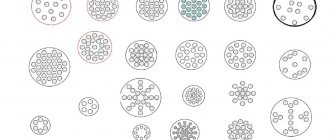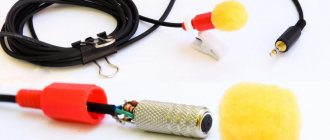Treatment against insects with fog generators. Pros and cons
There has been a bit of debate in the comments on previous posts about whether foggers are effective in insect control treatments.
Today we will try to tell you what they are, what is so attractive about them and why they are not used everywhere possible. Cold fog generators
Today there are many options for this device on the market, from heavy industrial generators with gasoline engines to compact electric sprayers. But the principle of operation of all these devices is the same: the working solution is sprayed under pressure into a powerful air stream, where droplets of the solution are further broken down to a size of 50-100 microns (depending on the device). Cold mist leaves the spray nozzle at a temperature equal to the ambient temperature. Upon exiting, the fog dissipates, filling the room, but since the droplets are large and not heated, the fog stays in the air for no more than 4 hours (an average of 2.5 hours).
In addition, any substance in aerosol form is highly chemically reactive. Thanks to this property, any substance, being in a dispersed (sprayed) state, exhibits its properties to a much greater extent than in its original state.
Based on many years of experience in pest control treatments, we can say with confidence that cold fog generators have proven themselves to be a tool for combating bed bugs and other pests, and have numerous positive reviews. However, there are also disadvantages to the cold fog treatment method, which will be discussed below.
Hot fog generator
The operating principle of a thermomechanical generator is that a working insecticide solution is injected into a stream of hot gas moving at high speed. In this case, the liquid first breaks into tiny droplets, and then these droplets evaporate almost instantly due to the high temperature of the gas. The cooling effect caused by the expansion of the gas and its contact with the relatively cold surrounding air leads to condensation of moisture in the form of droplets 1-20 micrometers in size. These droplets form a dense cloud, usually called fog, which moves away from the point of its formation due to the speed of the gas escaping from the pipe.
The main advantage of hot fog generators over cold fog is that if cold fog generators always “produce” the same aerosol with a fixed particle size, then hot fog generators produce an aerosol with a particle size that is the minimum possible for the given temperature and humidity parameters of the environment. That is, hot fog from the same generator will have different dispersion in an environment with warm, dry air and in an environment with cold, moist air.
GT generators can also work with both oil-based solutions with a high flash point and aqueous solutions.
Now let's look at these two tools for carrying out pest control treatments in comparison.
When using cold fog generators
, it should be taken into account that the aerosol of the working solution obtained by this method has a relatively large dispersion.
This means that in a room filled with furniture, such an aerosol is not able to penetrate deeply into various irregularities (cracks, cracks, holes) and be evenly distributed over the entire surface area of the living space. The biology of bed bugs is such that they like to hide in hard-to-reach shelters and even stay in them for a long time, longer than the exposure time (i.e. the time during which the room is closed and not used for the period of “treating” with the drug). Often it is necessary to carry out labor-intensive work to “open up” the space, or carry out disinfestation in several stages, once every 2-3 weeks. Also, cold fog noticeably moistens the room being treated, which can negatively affect electrical appliances and other objects with a wetted surface. One of the disadvantages is that cold fog, compared to hot fog, penetrates into upholstered furniture worse.
Hot fog generators
, in turn, are devoid of all the above disadvantages. However, such devices have a more complex design, consume more energy, and require highly qualified operating personnel, which significantly affects the cost of work. And when using working solutions based on organic solvents (usually glycerin), they are still fire and explosive.
PS Dry fog generators
Dry fog generators appeared on the Russian market not so long ago. There are 2 types of these devices: electric and propane.
Working with such a generator is not much different from its counterparts: a product is poured into the generator, which is supplied to a special nozzle with a sapphire tip. The nozzle sprays the product under pressure into the thermal nozzle chamber in the form of tiny particles measuring 0.25 - 0.50 microns. A dry mist emerges from the thermal nozzle, which quickly spreads throughout the room.
Initially, the generator was positioned as a device for removing unpleasant odors, but later they decided to use it in pest control. Conventional insecticidal products are not suitable for this generator (there will be no fog, regular spraying), but only products with the addition of a special base, which are sold separately. We have found 2 such tools so far:
1. “Dry Smoke Base with Insecticide Paragraph”
2. “Dry Smoke base with Confidant insecticide”
How adding an additional Dry Smoke component to an insecticide affects its effectiveness is not yet clear. If you have experience with this device, share it in the comments, we will be interested











